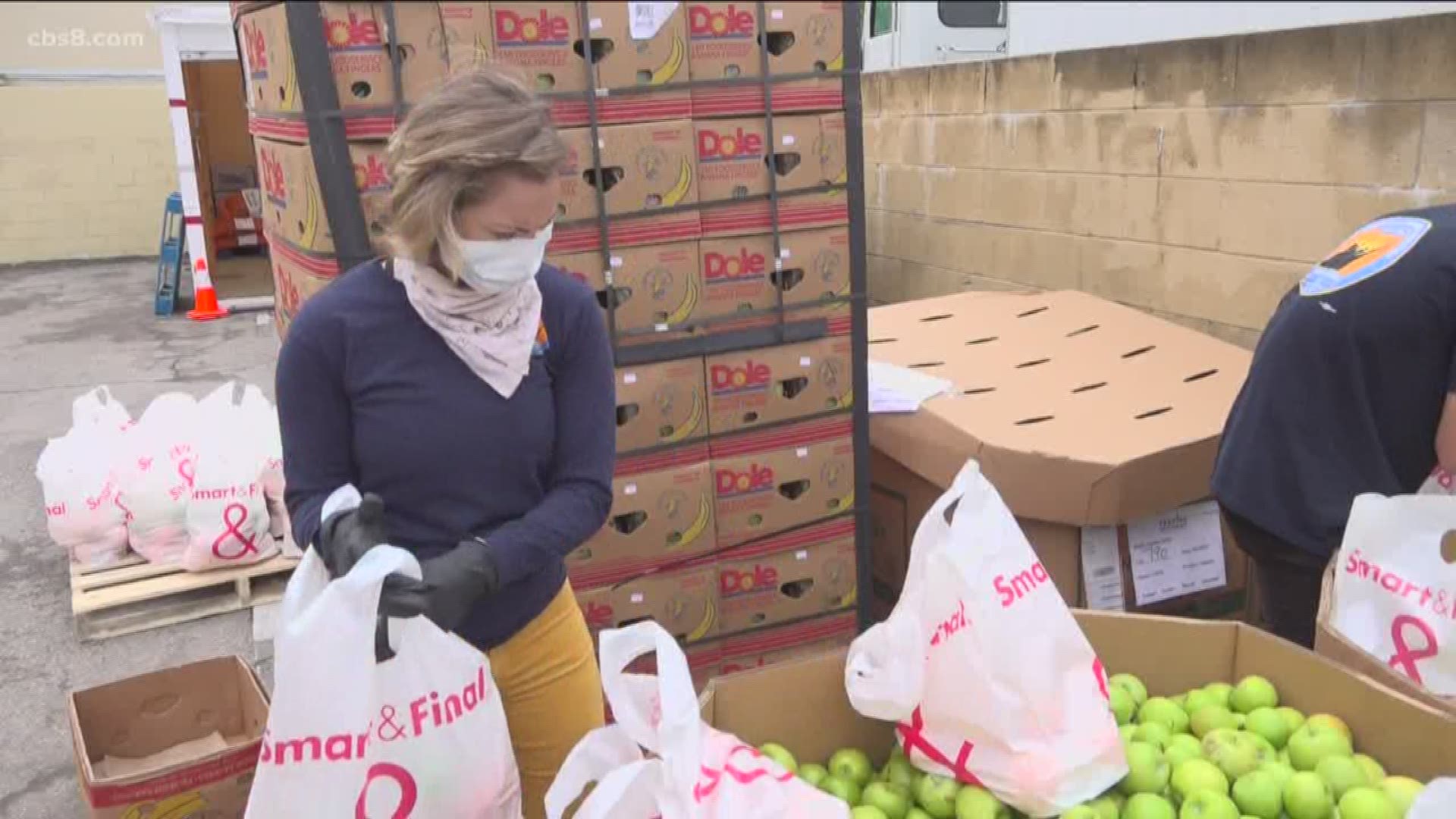SAN DIEGO — Many San Diegans like audio and visual technician, Phillip Comer, are out of work, struggling with something they have never faced before.
"[I'm left] not being able to know when I'm going to go back to work and how I'm going to be able to provide for my family when this is all said and done," said Comer.
Minerva Borja, who works for Avis car rental, also has never had to worry about food until recently.
"It has been really hard for industrial. We work for a rental company with the airport so it hit us really hard," said Borja.
Thankfully, The San Diego & Imperial Counties Labor Council has opened multiple food distribution sites, helping more than 4,000 families get by for now.
"When you think about [it,] most of this is bagged for a family of four, so you're talking about reaching out to over 15,000 people in the city already," said Keith Maddox, Executive Secretary-Treasurer of the San Diego & Imperial Counties Labor Council.
The Labor Council is one grant recipient of the San Diego COVID-19 Community Response Fund. A fund that News 8, The San Diego Foundation and other community partners have helped raise $8.3 million for.
100% of the donations go to organizations helping San Diegans impacted by the COVID-19 health crisis.
If you would like to help continue to put food on the table of working families, click here to donate.
------------------------------------------------------
View all News 8 coverage of coronavirus / COVID-19
News 8 has joined forces with The San Diego Foundation to raise immediate, emergency funds for our most vulnerable neighbors in need. Here is how you can help.
We also have a Frequently Asked Questions page we will continue updating with the latest information and reports.
Click here to watch "Facts Not Fear," a News 8 Special on coronavirus from March 26, 2020.
BACKGROUND
According to the CDC, coronavirus (COVID-19) is a family of viruses that is spreadable from person to person. Coronavirus is believed to have been first detected in a seafood market in Wuhan, China in December 2019. If someone is sick with coronavirus, the symptoms they may show include mild to severe respiratory illness, cough, and difficulty breathing.
Currently, there is no vaccine, however, the CDC suggests the following precautions, as with any other respiratory illness:
Know how it spreads
There is no vaccine
The best way to prevent illness is to avoid being exposed to the virus
It is thought to spread mainly from person-person between people in close contact
And believed to be spread by respiratory droplets produced when an infected person coughs or sneezes
Protect yourself
Wash your hands with soap and water for a minimum of 20 seconds
If soap and water aren't available, use hand sanitizer that contains at least 60% alcohol
Avoid touching your eyes, nose, and mouth
Avoid close contact with people who are sick
Put distance between yourselves and others
Protect others
Stay home when you are sick
Wear a facemask if you are sick
Cover your cough or sneeze with a tissue, then throw the tissue in the trash
If you don't have tissue, cough or sneeze into the inside of your elbow
Immediately wash your hands after coughing and sneezing
Clean and disinfect frequently touched objects and surfaces using a regular household cleaning spray or wipe
You can find information on disinfecting and cleaning on the CDC's How to Protect Yourself page.
The California Department of Public Health has issued guidance on the use of cloth face coverings to protect against the spread of the novel coronavirus COVID-19.
The County of San Diego has made face coverings mandatory for those working with the public including grocery stores, pharmacies, gas stations, convenience stores, and similar businesses.
While officials say these face coverings are not a substitute for practices like social distancing and handwashing, there is evidence to suggest that the use of cloth face coverings by the public during a pandemic could help reduce disease transmission. Officials do not recommend the public use N-95 or surgical masks which are needed by health care workers and first responders.

